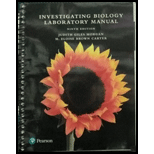
How does the flow of a fluid in a closed circulatory system differ from the movement of molecules between cells and their environment with regard to distance traveled, direction traveled, and driving force?
To determine: The differences between the flows of fluid in closed circulatory system from the movement of molecules between cells and their environment with regard to distance traveled, direction traveled, and driving force.
Introduction: A circulatory system has three basic components including a circulatory fluid, a set of interconnecting vessels, and a muscular pumping system called as the heart. By transporting circulatory fluid (usually blood) throughout the body, the circulatory system links the aqueous environment of the body cells to the organs involved in gaseous exchange, nutrient absorption, and disposal of wastes.
Explanation of Solution
The differences between the flows of fluid in closed circulatory system from the movement of molecules between cells and their environment with regard to distance traveled, direction traveled, and driving force are given as follows:
| Characteristics | Flow of fluid in closed circulatory system | The movement of molecules between cells and their environment |
| Distance traveled | Millimeters to meters | Less or equal to 1 millimeter |
| Direction traveled | Single direction | Random direction |
| Driving force | ATP-driven muscular pump | Diffusion |
Want to see more full solutions like this?
Chapter 42 Solutions
Investigating Biology Laboratory Manual (9th Edition)
- Describe the path a red blood cell takes in the human circulatory system using the following anatomical structures: right and left atrium, right and left ventricle, pulmonary and aortic semilunar valve, inferior and superior vena cava, pulmonary artery and aorta, right AV valve (tricuspid valve) and left AV valve (mitral or bicuspid valve), and pulmonary veins.arrow_forwardAssume the following pressures on the arterial end of a capillary: Plasma hydrostatic pressure = 35mmHg Plasma osmotic pressure = 26mmHg Interstitial hydrostatic pressure = 0mmHg Interstitial osmotic pressure = 1mmHg Given the pressures listed above, what is happening to fluid in this scenario? A. Fluid is leaving the capillary B. Fluid is entering the capillary C. Fluid is leaving the cell D. Fluid is entering the cellarrow_forwardWhat are the typical components of a closed circulatory system?arrow_forward
- What is the function of the circulatory system in the human body, and how does it work to maintain homeostasis?arrow_forwardWhy is a closed circulatory system more efficient than an open circulatory system?arrow_forwardDescribe the control processes that interact to regulate blood flow and pressure in tissues, and explain how the activities of the cardiac, vasomotor, and respiratory centers are coordinated to control blood flow through tissues.arrow_forward
- Contrast diffusion and bulk flow. Which mechanism is more important in the exchange of nutrients, oxygen, and metabolic end products across the capillary wall?arrow_forwardYou are studying bulk flow in a tissue. You have measured the following: Blood pressure at the arterial end of the capillary – 30mmHg Osmotic pressure at the arterial end of the capillary – 20 mmHg partial pressure of oxygen at the arterial end of the capillary – 42 mmHg; partial pressure of CO2 – 40mmHg partial pressure of O2 at the venous end – 42 mmHg; partial pressure of CO2 – 46mmHg Blood pressure at the venous end of the capillary – 14mmHg Osmotic pressure at the venous end of the capillary – 20 mmHg Pick all that would apply A)the 10 mm Hg pressure difference will drive blood plasma into the interstitial fluid B)the 6 mm Hg pressure difference will drive blood plasma into the interstitial fluid C)the hydrostatic pressure declines from the arterial side to the venous side because oxygen is lost. D)the pH is lower on the arterial side than on the venous side. E)the osmotic pressure remains constant due to carbon dioxide compensation. F)oxygen is taken up by the…arrow_forwardDescribe ths homeostatic functions of the vertebrate circulatory system .what functions are maintained at relatively stability ?And name the chief intracellular electrolytes and the chief extracellular electrolytesarrow_forward
- What are the components of the circulatory system? All that applyarrow_forwardBy how much would a blood vessel need to expand using vasodilation to increase blood flow by 200% (3x)?arrow_forwarda) List at least five things that a circulatory system does to help the body cells. Which of these is most important? b) Name some animals with an “open circ system” ; know how it works with some vessels, heart/pumps and hemolympth blood-like fluid c) what are the general differences between veins, capillaries and arteries? What do we call very tiny arteries? Very tiny veins?arrow_forward
 Human Physiology: From Cells to Systems (MindTap ...BiologyISBN:9781285866932Author:Lauralee SherwoodPublisher:Cengage Learning
Human Physiology: From Cells to Systems (MindTap ...BiologyISBN:9781285866932Author:Lauralee SherwoodPublisher:Cengage Learning



